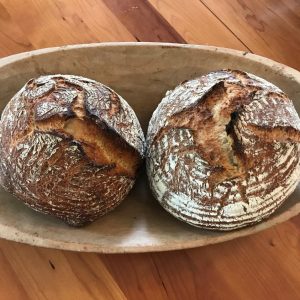In this series, we’re sitting down with the Swette Center affiliated faculty to catch up on food systems, innovation and what makes a good meal. See the rest of the series on our Food Systems Profiles page.
Read on for an interview with Clark Miller, associate director of ASU's Consortium for Science, Policy & Outcomes.
Question: How did you get interested in food systems issues?
Answer: My big interest has always been in understanding globalization and the place of science and engineering within it. After college and into graduate school I started thinking about climate change and the role of scientists as spokespeople for the globe. How do we think about the relationship between knowledge and decision making, and the politics and organization of knowledge systems?
I worked in that space for about twenty years, but I finally got fed up with it. The conversation about science and climate change wasn’t going anywhere, and it hasn’t gone anywhere since. We’re still having the same discussions today that we were back then.
I realized the place that change was happening was in the energy system. The burning of fossil fuels for energy is what is causing climate change. I became involved with ASU Lightworks and I’ve been doing a variety of different things, including trying to figure out how to decarbonize the energy system in a way that is beneficial to humanity. If we’re going to invest all this money in designing a new energy system, we should get more out of that investment than just a new energy system, it should be good for people and it should create value for communities. Hence my interest in the social value of energy on multiple levels.
Q: Share a glimpse of your current research and how it applies to food systems transformation.
A: This idea of the social value of energy attempts to flip the usual script around delivering electricity access in rural and remote communities. Around one billion people still rely on biomass supplemented by kerosene, diesel or candles as their primary form of energy.
The usual approach is to assume that modern energy is extremely valuable, and so to focus on the technology of bringing electrons to communities. The problem is that in rural areas, the cost of bringing electricity is prohibitively high, and these are already very poor communities. Depending on how you implement the energy system, you can actually exacerbate poverty.
So we’ve tried to focus on opportunities for rural and remote communities to use energy to create things that are of value to them. We’re looking to optimize the design of new energy systems so that it creates significant local value. Many of these communities are subsistence agriculture communities or are part of a network where food production is a primary form of income, so one of the things that we’ve been working on is finding ways that energy can improve agricultural production, and create additional revenue streams, and increase food security.
For example, in Puerto Rico there is a high level of energy access but the cost of energy is very high, and all the energy (i.e. coal, natural gas) and food is imported. The island is very energy dependent. Food prices are roughly 50% higher than the U.S. average, energy prices are 25% higher than U.S. average, and electricity is twice as expensive as the U.S. average. It’s a case of high poverty with high energy costs.
If you look at the food system as a whole, there are ways to reduce the cost of food by reducing the energy content in the food. The obvious change is to re-create local food production. At one point in time in Puerto Rico all agricultural production was local, and now it’s almost all being imported. There are huge sustainability advantages to re-localizing agriculture, along with price improvements, and greater resilience.
The first thing we want to do is map the energy content of the food system in Puerto Rico. Typically, when we measure the energy costs for a given household we just look at the direct payments for things like electricity or fuel. We don’t measure the energy costs that are embedded in the other things that the household consumes. So we want to know how much of the consumption burden is embedded energy. Once we get that map, then we can begin to think about energy innovation and lowering energy costs.
Q: What’s an innovation in the food systems world that you’re excited about?
A: Agriculture is a big producer of carbon through all its different activities. I’m not sure we have got much of a handle on what deep decarbonization means for the food system. In the energy field, we’ve been working with science fiction writers and futurists to imagine pathways for deep decarbonization using solar energy.
One could ask the same set of questions about food systems and deep decarbonization. Reducing food miles is a long established idea for decarbonization, but could there be other aspects in the food system that we haven’t considered? What are those alternative pathways, and how would you have conversations with communities about which way they would be interested in and how they could benefit from that change?
Q: What’s your favorite food right now?
A: I bake bread, and I love to bake bread. Just flour, water, salt and yeast into a round loaf in a dutch oven and the crust comes out really dark and caramelized.
